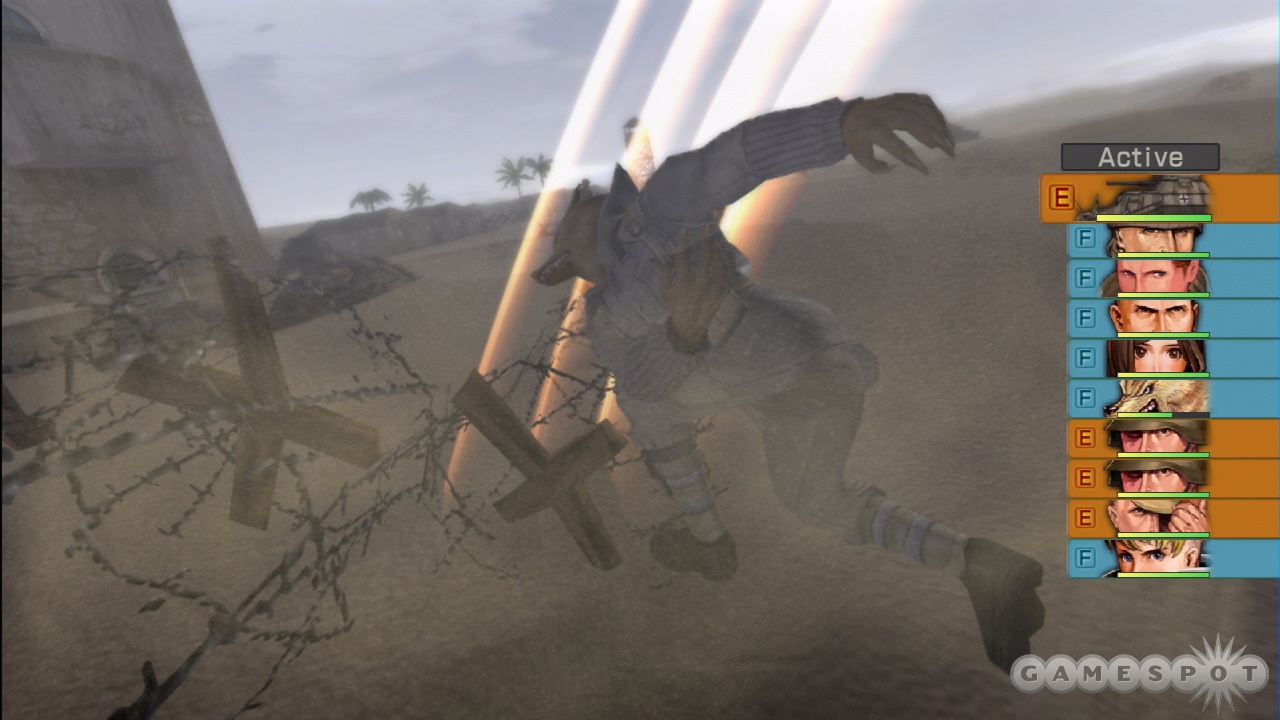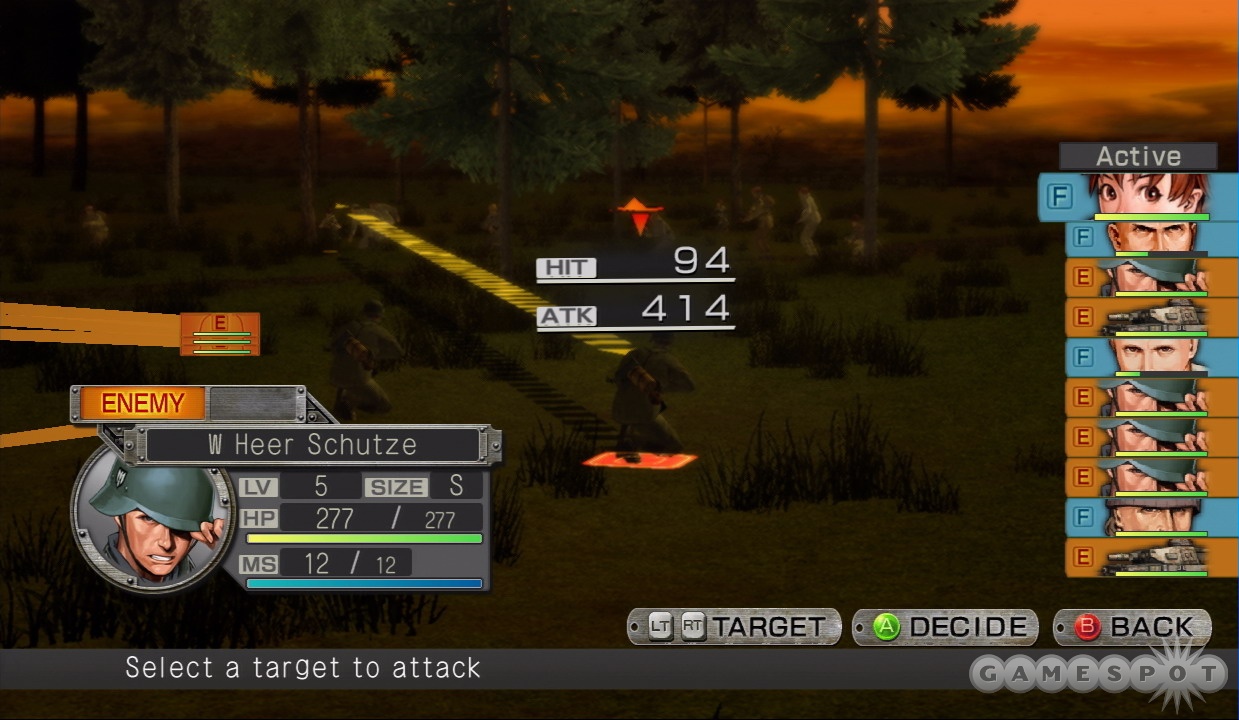Operation Darkness has no business being as enjoyable as it is. It's got the worst camera ever seen in a tactical role-playing game, some of the the worst visuals of any Xbox 360 title, and a number of irritating design flaws that will make you cry out in frustration. But give it time: Once you overcome the annoyances, you'll find some unique game mechanics and a rewarding succession of large maps to conquer. No, Operation Darkness is not an RPG classic, though it's tempting to assume that any game featuring Adolf Hitler and dragons (together at last!) is a must-play title. Perseverance is rewarded, and if you make it through the first couple of levels you'll inevitably feel the game crawling under your skin, pushing you--against all odds--to make another turn.

A lot of credit is due to the story, which is a cornball fantasy take on World War II. In this alternate history, lurching, lumbering zombies take potshots at werewolves, and Jack the Ripper slices up vampires with surprising speed and agility. These sights are commonplace for your adventuring party, a British special forces unit made up of a few lycanthropes, a fire-wielding maiden, and a nerdy scientist that can raise the dead, among others. You'll meet the most bizarre characters and enemies, who are in turn woven even more bizarrely into true historical events. It's all quite cheesy and cliched; we've heard the werewolf-versus-vampire legend a million times, and the supernatural take on World War II's been done already. Nevertheless, Operation Darkness merrily tackles its concept with melodramatic vigor, and the voice actors convincingly deliver the hilariously unrefined dialogue without a hint of irony.
Once you take to the gameplay grid proper, you'll be taking aim at a variety of enemies, but your greatest struggle in Operation Darkness isn't against magic-wielding vampires or pink-eyed demons--it's against the game's unwieldy, nausea-inducing camera. Its awfulness can't be put fully into words. In an SRPG, you need full command of your battlefield; that's why isometric and top-down viewpoints are so common in the genre. Here, the 3D camera is incapable of giving you any such helpful view. It is interested in staying glued to the back of the character taking the current turn and giving you as limited a view of the battlefield as possible. Trying to move it to a comfortable spot will cause it to snap back into less useful positions, get stuck behind buildings and trees, or swim about in the middle of the level geometry. All this, when all you want to do is choose the best square to move your character to. When turns are playing out, the camera isn't just bad--it rotates and zooms with such ferocity that you might feel dizzy. It will move under the level grid, flip the battlefield upside down, zoom directly up to a character's pixelated chest, or generally swoop around until you're close to losing your lunch. The good news is that with some finesse, you can tame the camera a bit, though this is more akin to taming a wild dingo than a Labrador retriever.
You'll also likely be taken aback by the game's terrible visuals. They have a few bright spots, like a handful of funny and fantastic animations, and some interesting effects courtesy of the semidestructible environments. But overall, Operation Darkness looks blurry and drab, featuring environments consisting mainly of ugly greens and browns. Textures are crude and unsightly, and most animations are jerky and look slightly unnatural. Character models are similarly odd; in some cases, heads don't seem properly positioned on bodies, and outside of prerendered cutscenes, there is no lip synching.
Basic gameplay is standard for most tactical RPGs: Each character in your party takes a turn, during which he or she can move, attack, or perform special abilities. However, there are some nice additions to the formula, the most obvious of which is the cover system. The most basic of these maneuvers is the cover move, in which you can get a particular character to move further by tying his move to that of a faster character. The more useful abilities, however, are cover attack and cover ambush. When set for a cover attack, a character will assist other characters whenever they attack; in cover ambush, your characters will shoot at enemies whenever an enemy in range takes a turn. All three of these moves, when used intelligently, let you dream up large, sweeping strategies that you wouldn't see in other SRPGs.
You'll also rely on a few other important moves. Each character has limited inventory space, though you have separate inventories for weapons and items. Characters can use healing items automatically when they die--or are close to death--and it's not uncommon for a party member to fall in a single hit. Thankfully, you can loot fallen corpses on the field. This is an important feature, not just because you will need healing items and ammo, but because the most effective weapons are found on the bodies of your enemies. For example, should you run out of rockets for your bazookas and you're cornered by two looming tanks, you can nab Panzerfaust antitank weaponry from your enemies' lifeless husks.

These aspects can make gameplay unexpectedly rewarding, particularly because your parties can get fairly large, often including around a dozen characters at a time. You'll face legions of enemies--some human, some undead--on massive maps that give you plenty of room to try out different tactics and test out the various special powers (Fireballs! Shape-shifting!) at your disposal. The size of these battles makes for intense matches, but they also lead to frustration, because if you're defeated, you have to restart at the very beginning. That can be a heartbreaking development after spending close to two hours on a level, only to make a simple mistake that costs you the battle. Other aspects of the game design don't help matters. Unlike with most similar games, you don't have to confirm your move, so if you choose the wrong option by mistake, you're stuck with it. Additionally, when you highlight enemies for attack, they are not highlighted in the turn list, which removes an important tactical consideration: You can't choose a target based on their order in the turn.
You play with up to three others on stand-alone maps via Xbox Live, though you will be controlling fewer characters yourself when doing so. Online works just fine, though it isn't any more compelling than the single-player, where the splendidly ridiculous story nicely glues the missions together. Whether you should play Operation Darkness depends on your level of patience. The horrendous camera and dingy graphics may turn you off, but if you stick with it, you'll find that there's a game worth playing lurking underneath them. And Nazi vampires driving tanks.